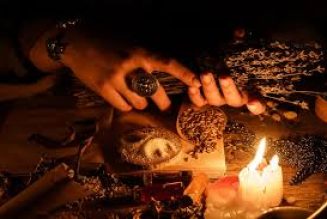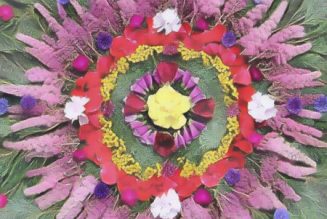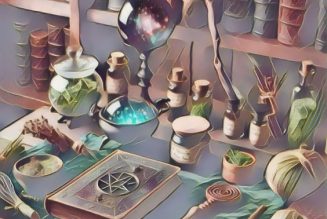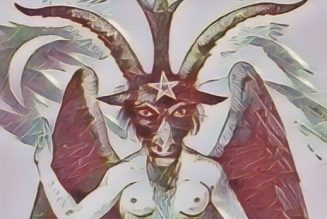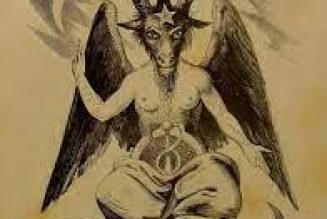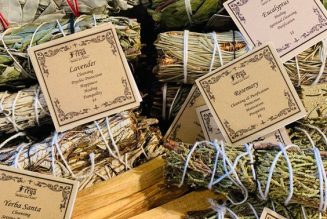Wicca and Modern Druidry began in the 1950s.
They have their roots and inspiration in the old traditions of Witchcraft and the Druids, yet were formed in order to create branches of a modern Western Paganism that celebrated Nature in all its glory.
Two friends, Gerald Gardner and Ross Nichols met around a decade earlier and shared together their mutual interest in magical lore, history, and the occult.
Gardner published a book called Witchcraft Today, and the religion of Wicca was born.
Nichols introduced Druidry to the world at large in the mid-1960s, based on the Celtic mythology of Ireland and Britain, history and folklore as well as what he had learned as a member of the Ancient Druid Order.
Wicca and Druidry held much in common, as you would imagine, as Gardner and Ross shared so much together in the development of their respective but related paths.
Wicca, as the modern formal religion and interpretation of Witchcraft, often contained three degrees, much in the same way that the ancient Druids had the three levels of Bard, Ovate and Druid.
Both followed a modern “Wheel of the Year”, where ancient festivals and holidays were incorporated into the modern calendar, and rites and rituals created around them to celebrate the seasonal and cyclical nature of the traditions.
Wicca and Modern Druidry share much in common, and can be seen as different but related “languages” that express a similar reverence for the cycles of nature, the gods, the ancestors and more.
Both have their roots and inspiration in an ancient past, and yet were developed for the modern world to bring back the magic and wonder of nature into everyday life, through rituals and prayer, work and dedication.
Wicca is a religion that follows a dual concept of deity, a goddess and god.
Wicca and Witchcraft have often been two terms that were used interchangeably; however, this is now occurring less and less as the traditions seek a distinction between themselves for various reasons.
While most Wiccans would say that they are Witches, not all Witches are Wiccans.
As stated previously, Witchcraft was not a religion, but a practice.
As far as we can tell, there was no dual concept of deity dating back to ancient times.
This is a modern interpretation of the forces of nature, which works as a good model for many in the Wiccan tradition.
The goddess is all-important, and it is her relationship with the god that is the basis for the cyclical and seasonal celebrations.
Many Wiccans call this the “Old Religion” stemming from an ancient matriarchal society but this is something of a misnomer.
It is largely due to the work of anthropologist Margaret Murray that we have this reasoning which cannot be proven or disproven, hence there is much debate.
Murray’s work was able to state that Witchcraft was based in a pre-Christian pagan tradition, but to hypothesise further and state that it all derived from a matriarchal Mother Goddess culture is merely just that: a theory.
The other modern Wiccan concept of “all the gods are one God, and all the goddesses are one Goddess” is a further theory developed from Murray’s work in the late 1970s through the 1990s, mostly promoted by feminist Wiccans such as the brilliant Starhawk.
Again, this is not something that has a factual basis in an anthropological context, and is hotly contested by many Pagans, whether they are Witches, Wiccans, Druids or from any other tradition.
Within Paganism, you will find polytheists (believing in many distinct and separate deities), pantheists (all deities are aspects of a divine force), monotheists (such as the Christian Druids who worship God through nature), or even monists (nature is God).
How you choose to incorporate religion, should you wish to in your tradition, is entirely up to you.
And so, Witchcraft is using your wits and intelligence, your own personal power and the powers of nature in order to change the world around you, to affect and effect change.
It uses charms and potions, herbal, animal and weather lore, as well as an innate sense of the spirit or energy that dwells in all things.
It has an animistic outlook, similar but yet different to Wicca and Druidry.
Wicca focuses on the turning of the Wheel of the Year, often symbolized by the relationship between dual deities, the Goddess and the God.
This relationship is reflected in the natural world around us, in the changing of the seasons, in nature and also in human nature.
It is a religion as well as a practice.
Druidry focuses more on inspiration, on questing the awen, seeking to find one’s place in the human world and the natural world, to live in balance and harmony.
It is about becoming a functioning part of an ecosystem, where we understand that all lives are connected; that we are a part of a whole.
Some say that Modern Druidry, in relation to Wicca, focuses on the product of the union of the Goddess and God, rather than the relationship between the two.
It is beyond the scope of this work to provide a full and detailed history and all relevant information pertaining to Witchcraft, Wicca and
Druidry.
Re-enchanting our lives is the very reason that Witchcraft, Wicca and Druidry can blend so easily together.
Whether you view any of the above as a religion, a philosophy or simply a way of life is irrelevant; what we must acknowledge is that at their core they attempt to honor a preChristian tradition, spirituality or practice of Europe and the British Isles.
This has been handed down in fragments for us to investigate and reinterpret in order to create beautiful traditions that help us to reweave
our connection to the natural world.
In today’s modern society, we can so often drop the threads of connection, as we live in high-rise apartments, cope with new pressures and stress from modern society, working eight hours a day while raising our children, and so on.
Wicca, Witchcraft and Druidry help us to reconnect to the past while envisioning a future that holds the powers of nature in the highest
regard.
It is about honoring the cycles of life and death, of transformation and rebirth.
It is about re-enchantment, and learning to bring the magic back into our lives.
It is about dropping the boundaries between the sacred and the mundane, and truly living magical lives.
